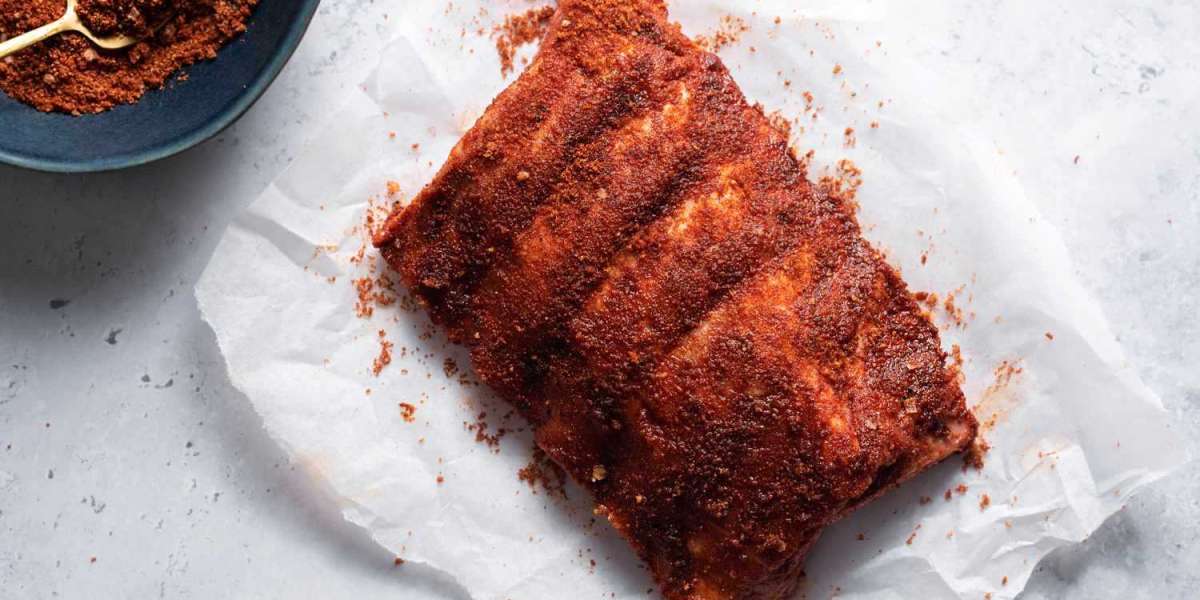Barbecue Rubs are essential for adding flavor, texture, and a delightful crust to grilled and smoked meats. A well-crafted rub can transform a simple piece of meat into a mouthwatering masterpiece. This guide explores the components of barbecue rubs, how to create your own blends, and tips for using them to achieve the best results.
What Is a Barbecue Rub?
A barbecue rub is a mixture of dry ingredients, typically including spices, herbs, and sometimes sugar, used to season meat before cooking. Rubs can enhance the meat’s flavor, create a flavorful crust, and contribute to the overall taste experience. They are applied directly to the meat and left to rest before cooking, allowing the flavors to penetrate and meld.
Components of a Great Barbecue Rub
Spices:
- Paprika: Adds color and a mild, slightly sweet flavor. Smoked paprika provides a smoky depth.
- Cumin: Offers a warm, earthy flavor with a hint of citrus.
- Chili Powder: Provides heat and a complex flavor profile.
Herbs:
- Thyme: Adds an herbaceous note that complements other spices.
- Oregano: Contributes a subtle, slightly bitter flavor that balances sweetness and heat.
Sweeteners:
- Brown Sugar: Adds sweetness and helps create a caramelized crust. It balances spicy and savory elements.
- Honey Powder: An alternative to brown sugar for a different type of sweetness.
Salts:
- Kosher Salt: Enhances flavor and helps to tenderize the meat. Its coarse texture works well in rubs.
- Sea Salt: Provides a slightly different mineral flavor and can be used as a finishing touch.
Heat Elements:
- Black Pepper: Adds a pungent heat and enhances other spices.
- Cayenne Pepper: For an extra kick of heat. Adjust according to your preference.
Additional Flavors:
- Garlic Powder: Provides a robust, savory flavor.
- Onion Powder: Adds sweetness and complements garlic.
Creating Your Own Barbecue Rub
Crafting a custom barbecue rub allows you to tailor the flavor profile to your taste preferences. Here’s a basic recipe to get you started:
Basic Barbecue Rub Recipe:
- Paprika: 2 tablespoons
- Brown Sugar: 2 tablespoons
- Garlic Powder: 1 tablespoon
- Onion Powder: 1 tablespoon
- Cumin: 1 teaspoon
- Chili Powder: 1 teaspoon
- Black Pepper: 1 teaspoon
- Salt: 1 teaspoon
- Optional: Cayenne Pepper to taste for extra heat
Instructions:
- Mix all ingredients in a bowl until well combined.
- Store the rub in an airtight container in a cool, dry place. It should stay fresh for several months.
Using Barbecue Rubs
Application:
- Dry Rub: Generously coat the meat with the rub, pressing it in to ensure it adheres. Allow the meat to rest with the rub applied for at least 30 minutes before cooking. For deeper flavor, let it sit overnight in the refrigerator.
Types of Meat:
- Pork: Works well with sweet and spicy rubs. Ideal for ribs, pulled pork, and pork shoulder.
- Beef: Enjoys bold flavors. Use rubs with a mix of sweet and savory spices for brisket and ribs.
- Chicken: Adapt rubs to complement the meat. Sweet and savory blends work great.
Cooking Methods:
- Grilling: Apply rubs to meats before grilling over direct heat for a flavorful crust.
- Smoking: Use rubs on meats before smoking to develop a rich flavor and deep bark.
Tips for Perfecting Your Barbecue Rub
Balance Flavors:
- Experiment with different ratios of sweet, spicy, and savory elements to find your ideal flavor balance.
Adjust to Taste:
- Modify the recipe to suit your preferences. Add more cayenne for heat, or increase brown sugar for sweetness.
Use Fresh Spices:
- For the best flavor, use fresh spices and herbs. Old spices can lose their potency and affect the flavor.
Apply Evenly:
- Ensure an even coating of the rub for consistent flavor. Avoid over-applying, which can overwhelm the meat.
Experiment:
- Don’t be afraid to try new spices, herbs, and combinations. The best rubs often come from personal experimentation and taste testing.
Store Properly:
- Keep your rubs in airtight containers away from light and moisture to maintain their freshness and potency.
Conclusion
Barbecue rubs are a key component in achieving delicious, flavorful grilled and smoked meats. By understanding the essential ingredients, creating your own blends, and applying them correctly, you can enhance your barbecue dishes and impress your family and friends with mouthwatering results. Enjoy experimenting with different flavors and techniques to make your BBQ truly exceptional.
Sincerely,








